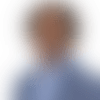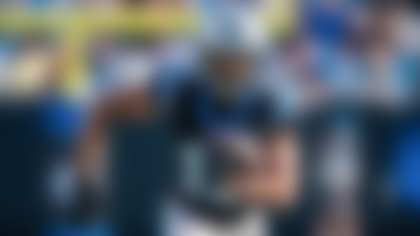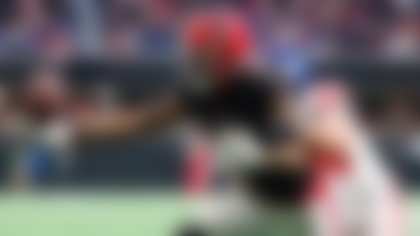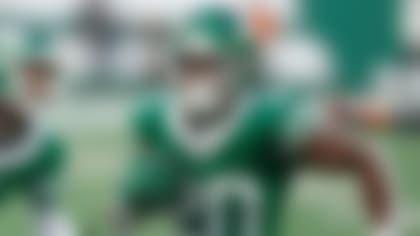You watch football with your heart. You play fantasy with your head. That can lead to some interesting internal battles when it comes to player evaluations. Sometimes, you see what you want to see from a player. Welcome to the first in an occasional series on Fantasy Rorschach Tests.
Welcome back to this occasional series. When I said "occasional," I didn't plan to drop one slightly more often than George R.R. Martin drops a new book. But things happen.
Rest assured that I've put the time away from this space to good use. Making a list. Checking it twice. Plowing through the entire MCU catalog of movies. That last part didn't help with anything fantasy football related. But it was a nice mental palate cleanser.
Alas, duty calls. As does J.K. Dobbins. Last season's finish for the rookie whetted the appetite for fantasy drafters entering 2021. From Week 8 until the end of the season, Dobbins averaged 13.6 PPR points per game -- 20th-best among running backs. That was up from the 7.6 points per game the rookie posted during the first six weeks of his NFL career.
The reasons were numerous. Increased knowledge of the Ravens offense. Better acclimation to the NFL. And the deemphasizing of Mark Ingram in Baltimore. In the first five games, Ingram averaged 19 snaps per game. He averaged 10 in the final six games he played. That drop in playing time coincided with Dobbins' boost in production.
But we've been fooled before by a strong finish to the season. Players don't always pick up where they left off. That's led to a divergence of opinion on Dobbins' outlook for 2021. Let's lay out the road ahead and see where it leads, shall we?
Opportunity
In 2020, all Dobbins stans asked for one thing: one fewer running back in the rotation. Their wish has been granted. Ingram flew the coop for Houston this offseason. That opens the door for Dobbins to be Baltimore's lead runner. He won't have the job all to himself, however. The Ravens recently re-signed the perennially underrated Gus Edwards to a two-year extension. It's a guarantee that the Ravens plan to run at least a two-man rotation.
Then there's Lamar Jackson. Baltimore's quarterback has logged at least 147 carries in each of his three seasons. He's led the team in rushing attempts in two of those three years. Even the most optimistic Dobbins fan should acknowledge a potential three-way split in the rushing attempts among the backfield trio.
The good news is that the snap share should be closer to what we saw late in the season. In the early part of the campaign, Dobbins played nearly 21 snaps per game. That went up to more than 33 per game after Baltimore relegated Ingram to an almost non-existent role. The hope is that Dobbins' number hovers closer to 35 snaps per game for much of 2021. That would put him closer to Nick Chubb's and Aaron Jones' 2020 level of playing time.
Fit and Usage
Where could Dobbins make up the shortfall? In the passing game. To this point in his football life, pass-catching hasn't been a big part of his repertoire. But that could be changing.
I believe that just because we've never seen a player do something isn't proof that they can't do it. Dobbins had only 24 targets last year. He never caught more than 26 passes in a season during this three years at Ohio State. Does that mean he can't catch the ball? We don't know. We only know that he hasn't done it a lot so far.
The Ravens coaches have said they want their backs to be more involved in the passing game. That's a low bar to clear. Few quarterbacks targeted their running backs at a lower rate than Jackson. Nearly anything would be an improvement.
This is a byproduct of Baltimore's yearly pledge to throw the football more. Again, a low bar to clear. Especially when you've been the NFL's run-heaviest team for the past two seasons. That pledge fell flat last year, though you can blame the odd offseason. It's hard to overhaul an offense if you don't have a chance to work together. This year could be the time to see if things really change.
But if they change, how much will Dobbins – or any of the running backs – benefit? There are still plenty of Marquise Brown believers. His role in the offense changed later in the season and his production was more consistent as a result. The Ravens spent a first-round pick on receiver Rashod Bateman with the hope of bolstering a lackluster receiving corps.
None of this precludes Dobbins from being a bigger part of the passing game. But does that mean he sees 60 targets or just 30? Both would be an increase. Only one is substantial.
Draft Value
There's plenty of debate over what kind of numbers Dobbins could produce in 2021. Strangely, there's little debate over where he should go in drafts. Most ADP lists put him somewhere between the 26th and 29th player selected. That shakes out to the early to mid-part of the third round. In a world where middle tier fantasy running backs are interchangeable, this feels OK.
If, and where, you draft Dobbins will depend on how you're building your roster. If you subscribe to a Robust RB draft theory, Dobbins should be a primary target. Even if he doesn't catch a ton of passes this year, he's still the lead running back in a run-heavy offense. That's worth something. But selecting him as a workhorse RB1 will leave you disappointed.
If you avoid drafting running backs outside of the first couple of rounds, well, this conversation probably wasn't for your anyway.
Marcas Grant is a fantasy analyst for NFL.com and a man who is reminded every spring of how great baseball is on the radio. Send him your signs of summer or fantasy football questions on Twitter @MarcasG or Instagram at MarcasG.












